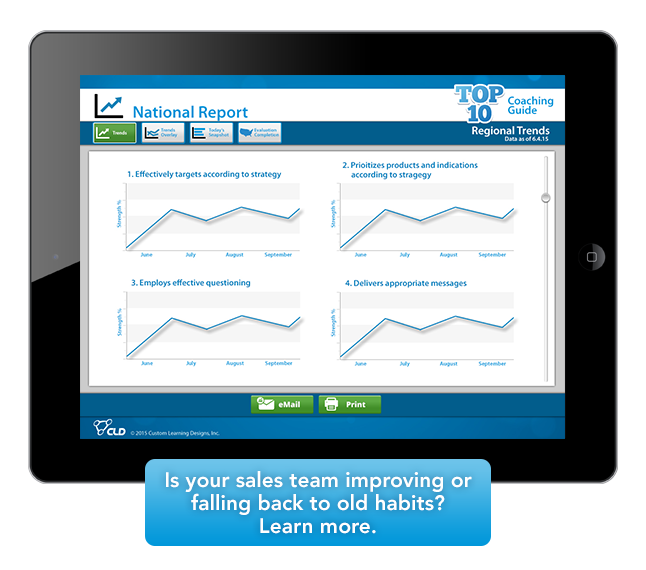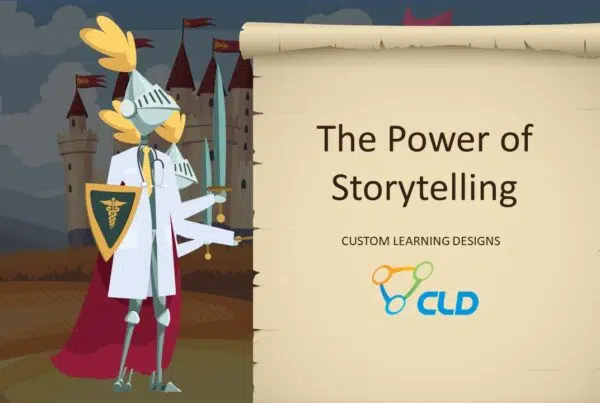The work of the pharma sales trainer has never been easy, but modernity is adding to the challenges inherent in the pharma sales training process. People’s attention spans are shrinking, and distractions abound. Trainers are unlikely to consistently have the undivided attention of learners.
Of course, learners face challenges too. They’re busy, with increasing demands on their time, and the time they spend in training is time they’re not spending generating revenues. Therefore, it’s important that training produces an identifiable return on investment.
The traditional training programs that may have lasted hours per day for several days aren’t a great fit for a workforce of whom more is expected, and who have constant and competing demands on their attention. “Bite-sized” training, also known as microlearning, is proving to be an effective antidote to today’s training and learning challenges.
Problems With Traditional Training
In the United States alone, businesses spend over $160 billion per year on employee training. It’s expensive, time-consuming, and it’s not always effective. Despite questions about the effectiveness of prolonged training, employees spend more hours in training today than they did ten years ago.
Another problem is that traditional, in-depth training programs take time to create and deploy, whether they’re delivered in traditional classroom style, or electronically. Worst of all, not that many learners actually apply what they learn in their training programs. And because of the “forgetting curve,” should the chance to apply something arise down the road, the learner may well have forgotten all about it by then.
Most employees are all too aware of the shortcomings of traditional training, and if employers don’t adapt to today’s training needs, staff may feel as if their needs don’t really matter. But microlearning can help in overcoming all these problems.
What Does Effective Microlearning Consist Of?
Rather than delivering a training program over a continuous, long period, microlearning is broken into “bite-sized” or “snack-sized” units that allow learners to fit training modules into vacant time slots with minimal disruption to their actual work. For best results, microlearning modules should be indexed, annotated, and searchable, so that employees can revisit modules on demand on their laptop or mobile device.
With microlearning, a multi-hour course can be completed over the course of several weeks, and then be revisited on an as-needed basis. Microlearning effectively addresses the reality of the modern learner who is beset with distractions. Highly-focused training “bursts,” interspersed with regular tasks, are far less disruptive, which can make them more appreciated by and more useful to learners.
Engagement, Retention, and Application Benefits from Microlearning
Sure, microlearning is convenient, but does it work? Evidence supports that it does. Because it trims out all the fat, presenting only key facts and relevant information, it helps avoid boredom and disengagement. Elements like bullet points, gamification, and infographics lend themselves to quick consumption and easier comprehension than traditional lectures.
Shorter, more focused sessions help learners avoid mental tiredness and make the most of the process of turning short term memories into long term memories. Short-term memory only holds a few items, but presenting information in small chunks eases the integration of these concepts from short-term to long-term memory.
Microlearning also caters to multiple learning styles, and “micro-practice” has been shown to improve the performance of a skill measurably. And microlearning allows each participant to self-orient in their training, creating their own unique learning journey.
The Role of Coaching in Microlearning
Coaching is an important part of learning retention and skills development, and it fits in nicely with microlearning. Say a learner completes a brief learning module. Immediately thereafter, a video plays and presents a typical coaching situation. The learner then selects from a list of options on how to respond. Based on this response, another video is triggered, and then another list of choices on how to respond. This helps the learner understand how to apply what they just learned and helps him or her to remember it better.
Field Coaching Ride Along App (FCR)
Bite-sized simulations of scenarios learners are likely to encounter, followed by choices of how to respond can help trainees identify what situations their new knowledge or skills apply to, so they’re more prepared to put what they’ve learned into action on the job.
Technological Advances Necessitate Microlearning
Not only are attention spans shorter, technology is advancing more rapidly than ever. In fact, technology advancements make it difficult for traditional training to keep up. At the same time, however, technology is necessary to the pharma sales rep. Technology skills that people learn to perform their job well can become obsolete in only a couple of years. When heavy investment is made in teaching of technology that is soon obsolete, businesses can spend large sums without getting a return on their investment.
Microlearning works well in a world where technology changes so rapidly. Video, gamification, and other e-learning techniques adapt easily to new platforms and new settings, unlike traditional in-depth learning programs.
How Trainers and Organizations Benefit from Microlearning
Traditional training content takes time to produce and deploy, and delivery of traditional training temporarily cuts worker productivity, not to mention costing companies dearly in terms of travel, venue fees, and incidentals. Microlearning is faster, cheaper, and easier, reducing development costs and accelerating deployment and delivery of training. Moreover, modular learning is better suited to making swap-outs and corrections where needed, and can be implemented across time zones and international boundaries simultaneously if necessary.
Finally, microlearning can be delivered precisely at the point of need, when a learner is most receptive, or when he or she actually needs the information. The training module can sometimes be used as a quick problem-solving tool in the field, so sales interactions aren’t needlessly derailed by having to look something up online or make a phone call.
Microlearning is faster, more effective, and costs less to produce than traditional training, and it can be updated much faster. Both trainers and trainees benefit from this highly effective method of filling skills gaps. We invite you to learn more about bite-sized e-learning and all of our areas of training expertise.






